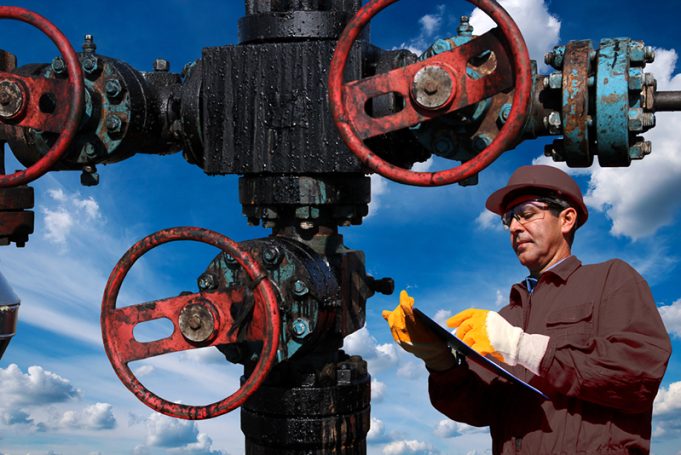As of a survey taken in 2019, there are an estimated 65 million people employed within the energy industry. Of this amount, almost 7 million people work specifically within the petroleum field, and almost the same within the gas mining industry. This total number amounts to about 2% of the world’s population, which may seem small, but actually makes the entire industry one of the most substantial on the planet. The energy industry itself is wide and expansive, with a multitude of energy types and resources being used on a daily basis.
How Many Types of Energy Are There?
The world’s energy can be divided neatly into 10 specific categories. Each one functions using its own techniques and technologies, with some being considered renewable and others non-renewable (such as with fossil fuels like crude oil). Every year, tens of thousands of people apply for jobs in this industry because the salaries are above-average in most cases, not to mention the assortment of benefits given to employees including bonuses, time off and rewards. Even those with minimal experience can find positions fairly easily using a platform like https://www.oilandgasjobsearch.com/jobs-offshore-oil-rig-no-experience where a variety of positions can be browsed with minimal fuss.
The ten types of energy include:
- Mechanical energy, which works by using a complex system of mechanisms and sometimes a type of fuel to power a multitude of devices and machinery
- Thermal energy, which relies on the power of heat to act as a catalyst before converting this reaction into a source of energy that is capable of powering many different things
- Nuclear energy, which takes advantage of a form of fusion to provide powerful energy capable of providing propulsion and other features, even if the formula is highly volatile as a result
- Chemical energy, another type of energy that relies on catalytic reaction, but is incredibly versatile and capable of providing power in a number of ways depending on the chemicals used
- Electromagnetic energy, widely considered as one of the cleanest forms of energy that relies on the power of electricity to supercharge magnetic components
- Sonic energy, which relies on electricity to function in most cases but is capable of transmitting both high and low-frequency sounds that can act as a source of energy to particular devices
- Gravitational energy, which can be used only for certain activities, such as momentum-reliant devices
- Kinetic energy, which occurs when two sources are exposed to friction and in the past was used to measure the earliest forms of electricity in a controlled environment
- Potential energy, another green energy that refers to elements such as the wind to take advantage of naturally occurring power, which isn’t always reliable as it is a dependant-energy type
- Ionization energy, which is unique in the sense that it was only recently discovered and relies on advanced machinery to power up ions which in turn can provide a charge
Of these types of energy, each one can be used within a specific field. Certain materials and ingredients harvested from the earth, or produced synthetically react within the confines of these energy types, providing a field of play where the energy itself can go from almost useless, to widely versatile.
For example, petroleum is useless until it is ignited within a controlled environment. This is why vehicles use this form of fuel, because as it is processed within the engine of a car, thermal energy can take over and turn the petroleum into a catalyst, which in turn can provide energy to the vehicle and allow it to operate.
On the other hand, electricity relies on a different form of energy. When occurring naturally, as is the case with lightning storms, a bolt will activate when the correct volume of kinetic energy is present alongside electromagnetic energy. As a result, a lightning strike can occur. People have learned to harness this energy by containing it within conductible materials and governing its flow, which is why households get to enjoy electricity as a commodity to run their devices and appliances every day.
Energy Sources Need Workers to Operate Them
From oil rigs that rely on manpower as well as carefully structured processes to function, right through to gas mines and fields that need machinery and workers that understand the volatile nature of compound elements – in order for any energy industry to operate, it requires a workforce. This is why so many people are employed within this industry, because it simply could not operate without them.
It’s also part of the reason why company owners and employers pay their staff and personnel such appealing wages, because some sources of energy are risky to extract, especially oil and gas. For oil deposits, a rig will need to be set up, or at least a ship with the relevant equipment including a drill will need to be available.
These assets cannot run themselves and that’s why employees are held in such high-regard. Even those with little to zero experience can apply for jobs within these sectors, as companies are keen to find enthusiastic employees that genuinely care about their role and want to make a difference. Although many rigs will enjoy the presence of mechanical engineers and experts, the vast majority of their personnel come from untrained backgrounds.
On-Site Training for All Workers
Most oil rig owners will provide two types of training for their inexperienced employees. The first is known as off-site training and it can take anywhere between a few weeks and several months. The goal is to introduce the beginner worker to the concept of rigs, how they work, and safety protocols. After being extensively trained, they’ll be transported to an oil rig, where they can further enhance their skills on the job.
Being able to take on a new career, especially one that is so well-paid with minimal experience can be a gift for many workers. Not only do oil rigs and other similar energy harvesting solutions provide an appealing level of income, but they usually allow benefits for their employees, such as high pensions and time off when quotas and shifts have been met.














